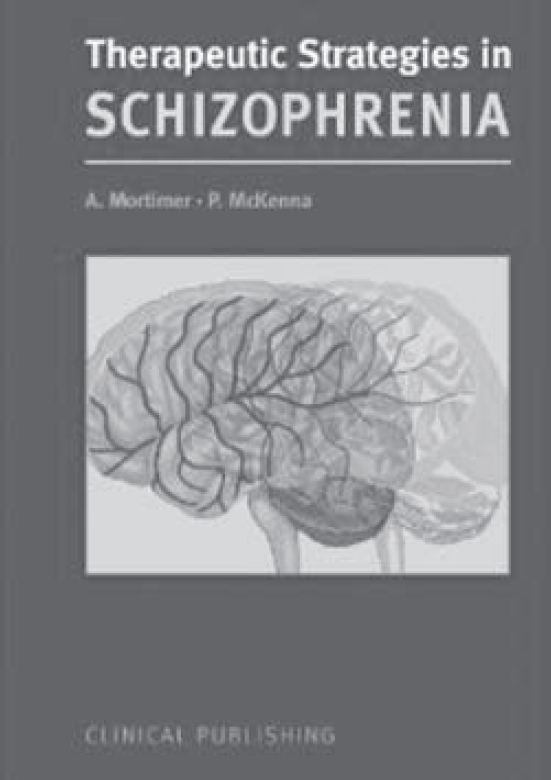
Given my work in a child and adolescent mental health services-based early intervention team working with adolescents and young adults with first-episode psychosis, I was interested in reviewing this book. Its collection of well-written, handily sized chapters should appeal to many working with individuals with schizophrenia. Several authors are academics but their reference to their own clinical experience suggests practice familiar within the National Health Service (NHS); a particularly pragmatic and valuable example of this is Ann Mortimer’s chapter on the role and effectiveness of additional drugs in schizophrenia.
There are 14 chapters in this volume. The authors are a mix of British academics and NHS clinicians and several overseas academics. Ann Mortimer is the Head of Psychiatry at Hull University, UK and her co-editor Peter McKenna is a research psychiatrist based in Barcelona, Spain. There are several chapters on the aetiological understanding of schizophrenia, one on neurochemical theories of schizophrenia (McKenna) and two succinctly covering structural and functional brain imaging; the former, by Salgado-Pineda, Pomarol-Clotet and McKenna, addresses implications for pathophysiology, whereas the latter, from Howes and Kapur, focuses on therapeutic inferences. There is a clear emphasis on the pharmacological management of schizophrenia with individual chapters addressing medical side-effects of antipsychotic agents (Frighi), the current status of clozapine (Kelly & Buchanan) and disturbed behaviour and its management (Dye). A helpful brief overview of treatment strategies in early psychosis is included (Drake & Lewis), although clinicians familiar with early intervention teams and their approaches will not find much new content here. The title wording of the chapter by Cheng and Jones I found particularly apt – ‘Second generation atypical versus first-generation conventional antipsychotic drug treatment in schizophrenia: another triumph of hope over experience?’ McKenna critically reviews the merit of cognitive therapy approaches in the treatment of schizophrenia and concludes, rewording text from Tarrier & Wykes’ 2004 influential paper, that cognitive–behavioural therapy use in schizophrenia should be considered ‘a cautionary tale’, rejecting the authors’ alternative of ‘cautious optimism’.
In conclusion, this volume of edited papers is an up-to-date exposition of clinically relevant themes in the contemporary management of schizophrenia, with the chapter lengths being easy to manage and the reference lists recent and thorough. This book should appeal to higher trainees anticipating working within adult psychiatry teams or destined for early intervention specialist services. Consultant psychiatrists wishing a quick up-to-date refresher of the management of schizophrenia will also find it useful.





eLetters
No eLetters have been published for this article.